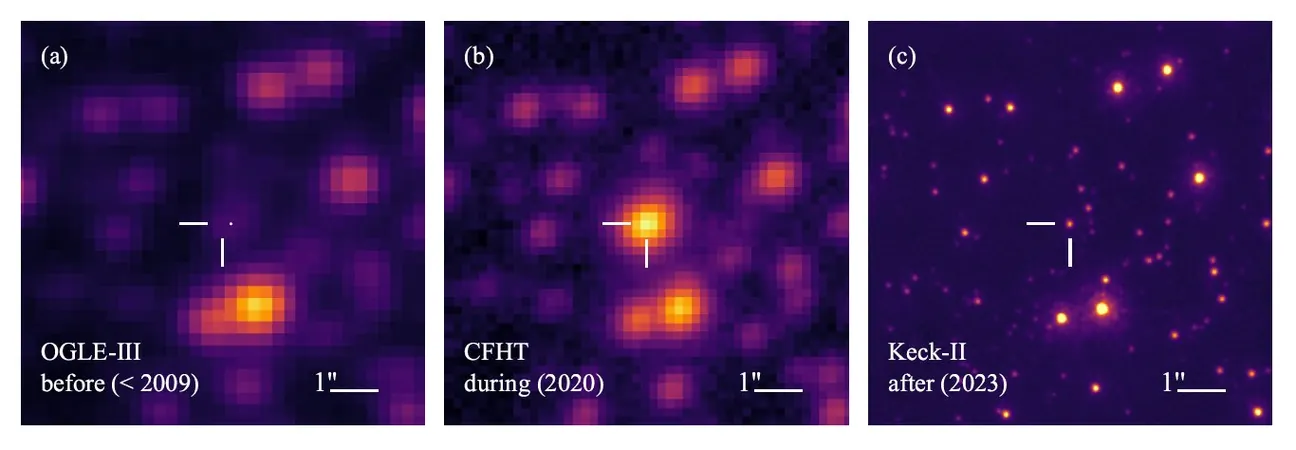
Citizen Scientists Unlock Secrets of 'Hot Jupiter' Exoplanet WASP-77 Ab
2024-09-25
Citizen Scientists Unlock Secrets of 'Hot Jupiter' Exoplanet WASP-77 Ab
In an impressive display of collective scientific effort, a diverse team of citizen scientists has helped refine our understanding of a distant exoplanet, known as WASP-77 Ab, a monstrous "hot Jupiter" located roughly 330 light-years away from Earth. Led by Federico Noguer from Arizona State University, the team has achieved unprecedented precision in measuring this enigmatic gas giant's characteristics.
Previously discovered in 2012, WASP-77 Ab is roughly 1.6 times the mass of Jupiter and completes an orbit around its parent star, massive and sun-like WASP-77, every 1.36 days. The new findings, derived from over 100 observations gathered from notable telescopes including NASA's Spitzer, Hubble, and James Webb Space Telescopes, have tightened existing data, significantly reducing uncertainties that could hinder future astronomical observations.
In an exciting twist for astronomers, the precise measurement of WASP-77 Ab's parameters allows for accurate predictions of its transits—an event when the planet crosses in front of its star. These forecasts are crucial for scheduling valuable observation time on space-based telescopes, which are often in high demand. As study co-author Anthony Norris, a retired dentist turned citizen scientist, exclaimed, “Research opportunities like this provide an invaluable platform for enthusiasts to engage with the thrilling world of astrophysics!”
What makes WASP-77 Ab especially puzzling is the ongoing debate surrounding its formation and migration history. While it resembles Jupiter in many ways, it orbits incredibly close to its star, which raises questions about how such gas giants evolve in hostile near-star environments. Prior research has noted the presence of metallic compounds within WASP-77 Ab's atmosphere, leading scientists to theorize that it may have originally formed at a greater distance before being pulled into its current orbit by unknown dynamics.
The collaboration involved over 40 citizen scientists from Exoplanet Watch and ExoClock, showcasing the growing influence of amateur astronomers in modern scientific endeavors. Their commitment not only reshapes our knowledge of WASP-77 Ab but also enhances the pursuit of understanding similar exoplanets throughout our galaxy.
This development marks a significant leap forward in exoplanetary studies, allowing astronomers to hone in on planetary atmospheres, potentially unveiling the conditions necessary for life beyond Earth. As interest in exoplanets continues to surge, citizen scientists play an invaluable role in pushing the boundaries of our cosmic knowledge, highlighting the collaborative nature of scientific discovery in the 21st century. Could there be more surprises waiting among the stars? Only time and research will reveal the mysteries yet uncovered!




 Brasil (PT)
Brasil (PT)
 Canada (EN)
Canada (EN)
 Chile (ES)
Chile (ES)
 España (ES)
España (ES)
 France (FR)
France (FR)
 Hong Kong (EN)
Hong Kong (EN)
 Italia (IT)
Italia (IT)
 日本 (JA)
日本 (JA)
 Magyarország (HU)
Magyarország (HU)
 Norge (NO)
Norge (NO)
 Polska (PL)
Polska (PL)
 Schweiz (DE)
Schweiz (DE)
 Singapore (EN)
Singapore (EN)
 Sverige (SV)
Sverige (SV)
 Suomi (FI)
Suomi (FI)
 Türkiye (TR)
Türkiye (TR)